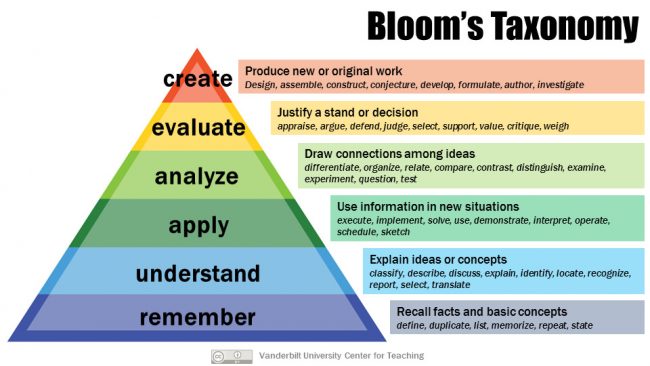As educators, our mission extends beyond imparting knowledge; it involves shaping thinkers, innovators, and leaders for an ever-evolving world. This imperative calls for a reevaluation of traditional assessment methods, particularly exams, which have long served as the cornerstone of academic evaluation. My professional experience coupled with my pedagogical training and experience at Princeton University, along with the recent developments in generative AI, has underscored the need for this shift. In this post, I’ll delve into the transformation of exams from mere tests of knowledge to comprehensive tools for assessing critical, practical, and creative skills.
The Imperative for Change
In an age where technology, pedagogy, and global challenges intersect, the traditional exam format falls short. Online exams, proctoring solutions, and generative AI have opened new avenues for assessment, prompting us to rethink our approach. The goal is no longer just to test but to assess—assess in a way that reflects our students’ ability to navigate the complexities of the real world, leverage technology judiciously, and contribute meaningfully to society.
The concept of exams is undergoing a revolutionary change. They are evolving from tools of mere knowledge recapitulation to instruments that measure a student’s capacity to apply knowledge in real-life scenarios, think critically, and solve complex problems. This shift mirrors our broader educational objectives: to prepare students not just for exams, but for life.
Bloom’s Taxonomy Revisited
Central to this evolution is Bloom’s taxonomy, a framework that categorizes educational objectives and outcomes (see image below).

However, with the advent of generative AI, the lines have blurred. AI can now perform tasks across Bloom’s levels—from remembering and understanding to applying and even creating. This revelation isn’t a threat but a wake-up call. It challenges us to focus on distinctly human skills in our assessments:
- Create: We should aim to assess students’ ability to integrate human judgment in formulating original solutions and to collaborate spontaneously.
- Evaluate: Our exams should gauge students’ engagement in metacognitive reflection and their ability to evaluate the ethical consequences of different actions.
- Analyze: We need to assess critical thinking and reasoning in both cognitive and affective domains, including the interpretation of problems and decision-making.
- Apply: Assessments should measure students’ real-world operation, implementation, and creativity in developing solutions.
- Understand: It’s crucial to evaluate students’ ability to contextualize responses, taking into account emotional, moral, or ethical considerations.
- Remember: Finally, we should consider assessing memory in contexts where technology is not readily available.
Reevaluating Technology in Assessment: A Double-Edged Sword
While the digital revolution has brought unprecedented convenience and innovation to many aspects of higher education, it presents a nuanced challenge in the realm of assessments. The allure of technology, particularly within Learning Management Systems (LMS), often tempts us towards automated, easily graded exams. However, this convenience comes at a cost. In our pursuit of efficiency, we risk sidelining the complex, nuanced, and inherently human aspects of learning that are critical for deep intellectual development.
The Compromise of Digitization
Digitizing exams often means prioritizing the types of questions that can be automatically graded—typically multiple-choice or similar formats that assess lower levels of Bloom’s taxonomy, such as remembering and understanding. This approach, while efficient, overlooks the essential higher-order thinking skills like analysis, evaluation, and creation. By simplifying assessments to fit the constraints of technology, we risk not only diluting the richness of the learning experience but also failing to prepare students for the complexities of real-world challenges.
This isn’t to say that technology should be abandoned in assessments. Instead, we must strive for a balanced integration that leverages the strengths of digital tools without compromising the depth of student learning. For example, LMS features that support peer review, discussion forums, and project-based assignments can foster higher-order thinking even within a digital framework.
Crafting Assessments that Truly Measure Learning
The ultimate goal is to design exams and assessments that genuinely measure what we value as educators: the ability to think critically, solve problems creatively, and apply knowledge in real-life scenarios. This might mean embracing more manual grading to evaluate open-ended responses or incorporating project-based assessments that require students to demonstrate their learning in action. It’s about finding the right mix of technology and traditional methods to support our educational objectives fully.
As educators, we are the custodians of intellectual development. It is incumbent upon us to critically evaluate how we use technology in assessments. We must ask ourselves: Does this method enhance the learning experience? Does it allow us to accurately assess the complex skills our students need to thrive? Our challenge is to navigate the digital landscape thoughtfully, ensuring that technology serves as a tool for enhancing, rather than diminishing, the educational journey.
The shift towards comprehensive assessments that truly reflect student learning is both necessary and complex. As we navigate this transformation, we must critically assess the role of technology, ensuring that it enhances rather than compromises the depth and richness of student learning. By committing to assessments that value critical thinking, creativity, and practical application, we prepare our students not just for exams, but for the multifaceted challenges of the real world. Let’s embrace the opportunities of the digital age thoughtfully, ensuring our assessments remain as nuanced and multifaceted as the subjects we teach.